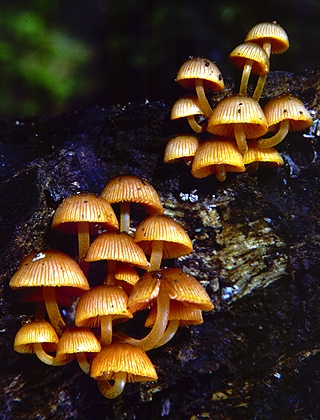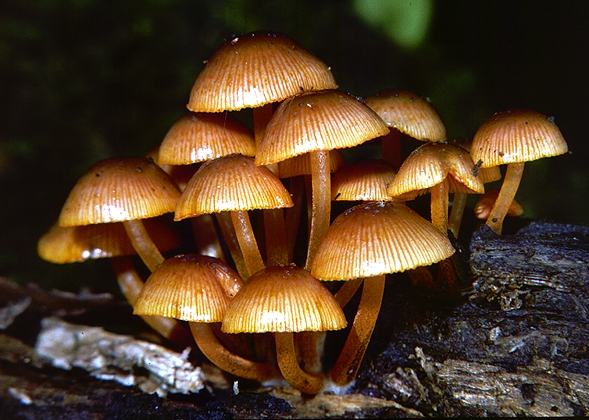
Mycena leaiana (Berk.) Sacc. var. australis Dennis

Common name: None.
Description: The caps are usually 1.53 cm in diameter and are convex or nearly hemispherical, light to dark brown (but often with an orange tint), viscid to glutinous and radially striate. The gills are bright orange with darker orange margins and are adnate but often with a small tooth that runs a short distance down the stem. The stems are usually 23.5 cm long and 11.5 mm thick and are hollow, slippery-viscid to glutinous, smooth and pale orange.
The spores measure 79 × 44.5 µm and are ellipsoidal, smooth, colourless but white in mass.
Substratum: Mycena leaiana var. australis occurs on logs in subtropical rainforests or eucalypt forests. It is usually caespitose (several growing from a single point).
Distribution: Known from Queensland, New South Wales, Victoria and Tasmania.
Notes: Mycena leaiana var. australis is an exceptionally beautiful fungus whose brilliant orange colours are best seen from below. It was first described in 1953 by the English mycologist R.W.G.Dennis from the Lamington National Park in southern Queensland. It is considered to be separate from the American variety Mycena leaiana var. leaiana although the two taxa are very similar. Mycena leaiana var. australis is also known from New Zealand and Papua-New Guinea.

